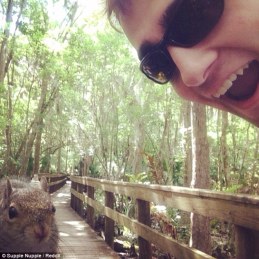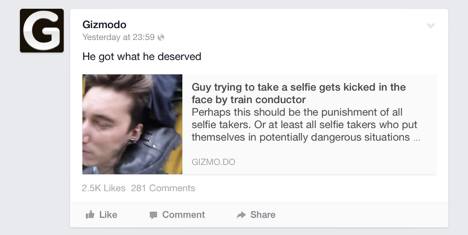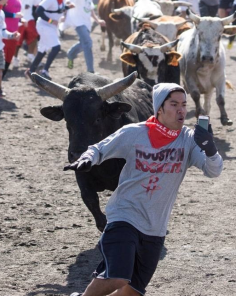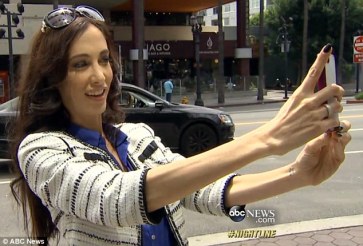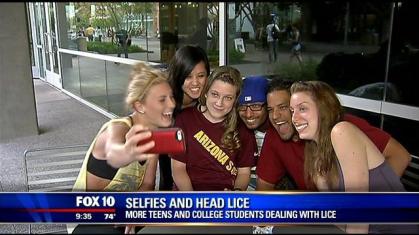I’m sure we’ve all noticed just how often the word ‘selfie’ appears in the news. There are two ways of looking at this – firstly, it seems to be a trigger for journalists and newspapers to run with a story which otherwise might be a bit of a non-event. Secondly, it is used within modern-day morality tales, in which selfie-taking is solemnly reported as causing another death, another injury, another social problem. I’ve collated a few of them here, just to show the scope and theme of these stories.
The Daily Mail is really in a category of its own when it comes to selfie scare stories. Here we have tales of attacking squirrels, and police dogs, who reacted badly (and in a way perhaps that the Mail might defend) to being included in a selfie.
There’s also the story of a young man who was kicked in the head by a train engineer as the train passed behind him: depending on how you view selfies, this is either apt punishment for standing too close to the train / videoing yourself, or an unprovoked attack. Tech magazine Gizmodo (along with numerous commenters) certainly seemed to think the former:
Another story relates to a participant in the Houston Bull Run who was photographed filming his experience:
But although this is presented as part of a wider trend for ‘dangerous selfies’, in which subjects record themselves in perilous circumstances, as we see from the subject’s own video, there are countless people at the bull run who are not recording themselves. Doing dangerous things is therefore something that people seem to want to do anyway, whether or not they record it, and it is the rationality of this that should be questioned, not whether they film or photograph themselves doing so.
A further story details a young woman’s death in a road accident, which is assumed to have been caused by taking a selfie whilst driving. As with the story above, it is not so much dangerous behaviours themselves which are reported, but dangerous acts of photography. Would, for instance, this woman’s death be reported quite so widely if she had crashed whilst on the phone, or whilst reaching for something in the glovebox? Probably not, as these behaviours have not been discursively constructed as problematic in the same way as selfies.
The story of a woman’s cosmetic surgery procedure is given an added twist by virtue of its connection to selfies – the feature implies that cosmetic surgery itself is now accepted, but that it appears dubious and somewhat desperate when the reason given is to ‘look better in selfies’.
As Triana Lavey herself describes, she was not happy with the way she looks, so she wanted to change that. The selfie dimension is rather secondary, being a result of her dissatisfaction rather than the cause, as it is suggested. But she acknowledges the importance of one’s photographic representation – in terms of generating self-esteem, and for participating within social media. Her statement that she feels like herself, but Photoshopped, is certainly very interesting, and merits another post in itself, in that it reflects the influence of not just photography, but photographic technologies, upon perceptions of the self.
Lastly, and my favourite, is the suggestion that taking selfies has led to an increase in teens getting head lice. Quoting a ‘California-based lice expert’, The Independent reports Mary McQuillan as saying “Every teen I’ve treated, I ask about selfies, and they admit that they are taking them every day…I think parents need to be aware, and teenagers need to be aware too. Selfies are fun, but the consequences are real”. But as every researcher knows, correlation does not equal causation, and she might as well have asked her patients if they attended school / had friends / went to parties, and extrapolated from that.
As Dr Richard J. Pollack from the Harvard School of Public Health contests, such a suggestion is “ridiculous” and is “a marketing ploy, pure and simple”. Whether as a marketing tool, or as newspaper click-bait, these examples are only the tip of the iceberg in demonstrating the role which selfies play in generating interest, even if it is mainly confined to shock-value.
